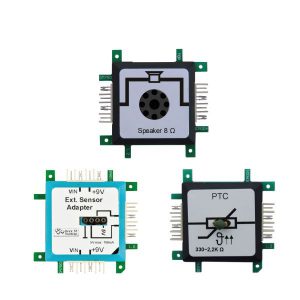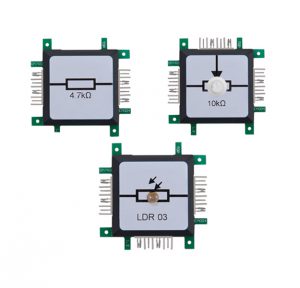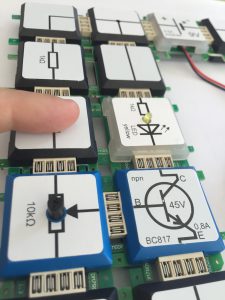
Resistors – part 2
We already gave you an introduction into the matter of resistors last week. Today, we will tell you about the different kinds of resistors:
The first special resistor is the LDR, it´s a resistor that changes its resistance depending on the light intensity. This means that it doesn´t change mechanically, e.g. by pressing a button, but depending on another electromagnetic factor: light. LDR stands for “Light Dependent Resistor”. If the ambient light is getting brighter, the resistance is getting smaller and the current flow through it therefore bigger.
Now we´re looking at a resistor that changes its resistance by manually turning it: the potentiometer. A potentiometer has three contacts, one of them is called sliding contact. If a potentiometer e.g. has a resistance of 10k Ohm, the sliding contact “slides” from 0 to 10k Ohm. If you connect a LED to a potentiometer, you can adjust its brightness continuously.
Well, there are also resistors that depend on temperature. They are called PTC and NTC. PTC stands for “Positive Temperature Coefficient” and NTC stands for “Negative Temperature Coefficient”. Why are they called like that? Positive (in PTC) means that the resistance and the temperature are proportional: Higher temperature means higher resistance. If the temperature is lower, the PTC conducts electricity better, because its resistance is smaller. A NTC works exactly contrary.

 en
en de
de

